Part 2 of 2 Parts (Please read Part 1 first)
If Russia should capture or damage more Ukrainian reactors, then Cameco would have to find a buyer for its previously contracted uranium. Veronica Baker is a spokesperson for Cameco. She said, “We have plenty of visibility and advance notice regarding the annual volumes required under the contract, which provides us with flexibility to adjust our plans, including for production if circumstances require.”
Contracted uranium prices are usually higher than spot prices. This means that Cameco may take a discount if Ukraine purchases less uranium because of the war’s impact, according to Carter. Alternatively, if prices spike in the next twelve years, Cameco may be unable to fully cash in with so much production dedicated to Ukraine unless it reduces those sales. Carter expects prices to continue to rise in the next two years. Carter said, “I think Cameco has more to lose here than the Ukrainians if the (market) price were to continue higher.”
Kotin said that Energoatom will purchase Cameco’s uranium at a price based equally on a fixed price and a market price. Such an arrangement provides some protection for Energoatom in case prices spike. Baker said that it was normal for sellers and buyers to be subject to risk from commodity price swings.
Energoatom’s risk is that Cameco might choose to sell it less uranium so that the company can cash in on high prices with other buyers, but that seems unlikely, according to Carter.
The main alternative uranium source to Cameco is Orano, the French state-owned company. Orano has told Energoatom that it cannot supply it with more uranium until 2030. As a hedge against the risk of relying so much on a single supplier, Ukraine is attempting to expand its domestic nuclear industry, according to Kotin.
While Ukraine with rely on Cameco for uranium, it has signed separate deals for further processing. It has a contract with Urenco Group, based in the U.K., to enrich the uranium from Comeco. It also has a deal with Westinghouse, based in the U.S., to fabricate the enriched uranium into reactor fuel. These arrangements may secure Ukraine’s energy needs no matter how long the war lasts.
Other countries such as Poland and the Czech Republic are also looking to increase reliance on Western-made reactors and fuels, according to Carter. Cameco’s Baker said, “There is considerable interest among many nations and utilities seeking to realign how they meet their future energy input needs, including in eastern Europe.”
Last April, Cameco singed a ten-year contract with Westinghouse to supply uranium fluoride 6 for Bulgaria’s single nuclear generating station. Cameco and its partner Brookfield Renewables are in the process of buying Westinghouse.
Jonathan Wilkinson is the Canadian Natural Resources Minister. He said that Canada has a huge role to play globally. Without mentioning any names, he said that he had spoken with European countries who were keen to move away from Russian reactors and nuclear fuel. Wilkerson said, “We have an abundance of uranium.”
Blog
-
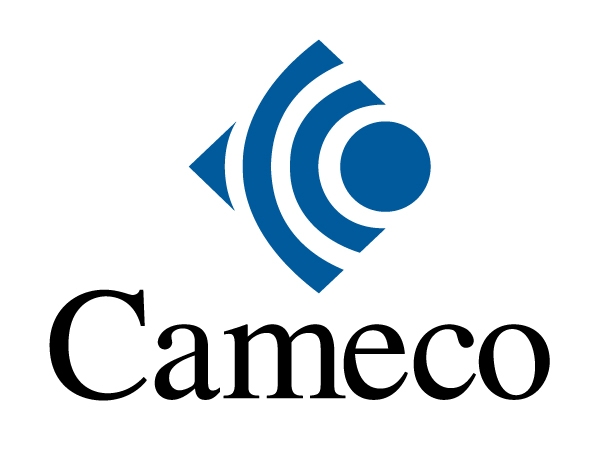
Nuclear Reactors 1220 – Candian Cameco and Ukraine Energoatom Have Signed A Twelve Year Deal For Uranium – Part 2 of 2 Parts
-
Nuclear News Roundup May 11, 2023
Russia Creating Unstoppable Submarine Nuclear Missiles newsweek.com
The US and South Korea have secured a landmark deal to counter the North Korean nuclear threat. Bbc.com
Steel maker considers use of NuScale SMRs at its mills world-nuclear-news.org
Faulty seals replaced in Olkiluoto EPR world-nuclear-news.org
-
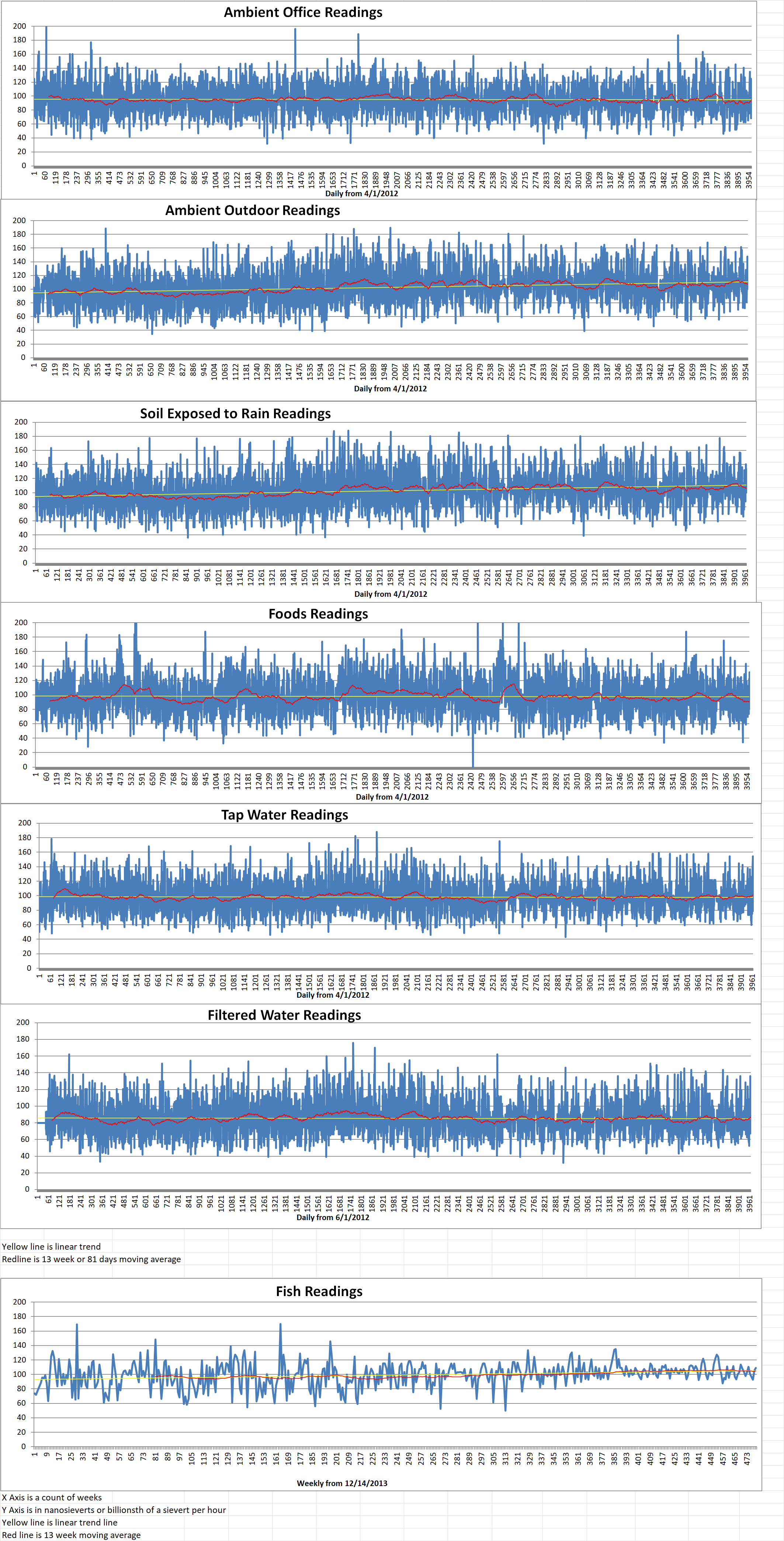
Geiger Readings for May 11, 2023
Ambient office = 122 nanosieverts per hour
Ambient outside = 135 nanosieverts per hour
Soil exposed to rain water = 133 nanosieverts per hour
Red bell pepper from Central Market = 131 nanosieverts per hour
Tap water = 79 nanosieverts per hour
Filter water = 67 nanosieverts per hour
-
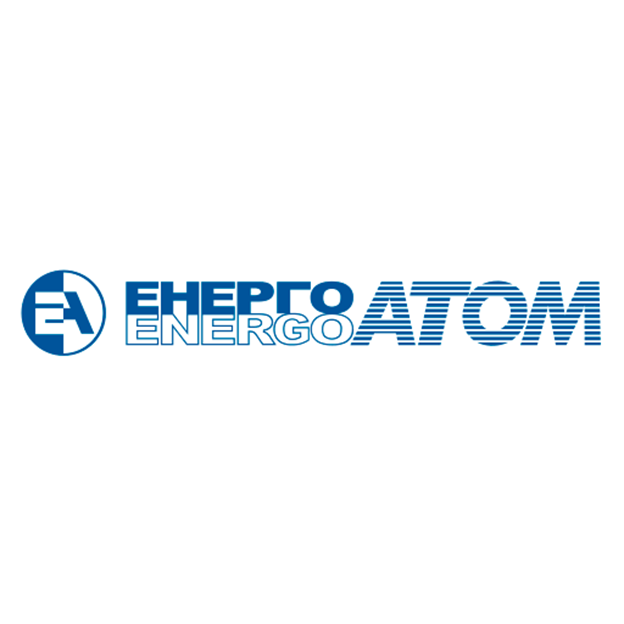
Nuclear Reactors 1219 – Candian Cameco and Ukraine Energoatom Have Signed A Twelve Year Deal For Uranium – Part 1 of 2 Parts
Part 1 of 2 Parts
Ukraine has signed a twelve-year deal with Canadian miner Cameco Corporation to provide uranium for all of its nuclear reactors. The deal gives each side the right to change sales volume with two-year’s notice. This information was provided by the Ukrainian state-owned utility Energoatom. The details of the arrangement have not been reported previously. It reflects the uncertainties caused by Russia’s war with Ukraine and underlies the high stakes for both parties.
The risks for Cameco are financial. The risk for Ukraine is reliance on a single provider which leaves it with few alternatives to maintain power supplies. Petro Kotin is the CEO of Energoatom. He said, “There’s a lot of flexibility in the deal. The agreement is up to 2035, but two years prior to supply of the uranium, we are to (give) them an indication of what we will need, what volume of uranium we will require.”
Before the Russian invasion of Ukraine in February of 2022, Ukraine ran all of its reactors on Russian nuclear fuel. The Ukrainian fleet of reactors provide fifty five percent of Ukraine’s electricity. Ukraine has stopped Russian nuclear fuel purchases and has turned to Western companies such as Cameco.
In 2022, Cameco restarted operations at the world’s biggest high-grade uranium mine in northern Saskatchewan. A ten-year slump in the nuclear sector eased in 2022. This was partly because of the Ukraine war and partly because of global efforts to reduce carbon emissions.
As Cameco ramps up production for the Ukraine contracts, it is also betting on gaining more deals from Eastern European nations as they try to reduce dependence on Russian energy.
Cameco is the world’s fourth-largest uranium producer. Its stock is up more than fifty percent since January 31st, 2022. Expectations that Russia, who is a big producer of uranium, would launch a full scale invasion triggered an extended rally.
The agreement with Energoatom is worth at least four billion dollars at current uranium prices. Cameco will supply Ukraine with uranium hexafluoride from 2024 to 2035. This will allow Ukraine to end its reliance on Russian nuclear fuel.
The deal will supply the nine reactors under Ukrainian control. It also includes an option to supply six captured reactors in the southeastern Zaporizhzhia region if Ukraine regains control of them.
Cameco and Energoatom can each adjust how much uranium it delivers on two years’ notice. A spokesperson for Energoatom said that there were no restrictions on how much either of the two parties could adjust deliveries. Nick Carter is executive vice president of UxC LLC, an independent research firm focused on the nuclear fuel cycle. He said that the two-year window to adjust volumes without limit offers flexibility well beyond the usual uranium contract adjustment of five percent to fifteen percent annually.
For Cameco, the biggest risk is that Ukraine might require less uranium if Russia should capture or damage more reactors. Ukraine’s energy grid and thermal power generators have been military targets since the invasion.
Please read Part 2 next -
Nuclear News Roundup May 10, 2023
Kant calls for unfettered access to U.S. nuclear technology to build small modular reactors thehindu.com
Second unit of Belarus nuclear plant connected to grid world-nuclear-news.org
Pressing Russia, US shares nuclear warhead data under treaty france24.com
Tennessee creates Nuclear Energy Advisory Council wbbjtv.com
-
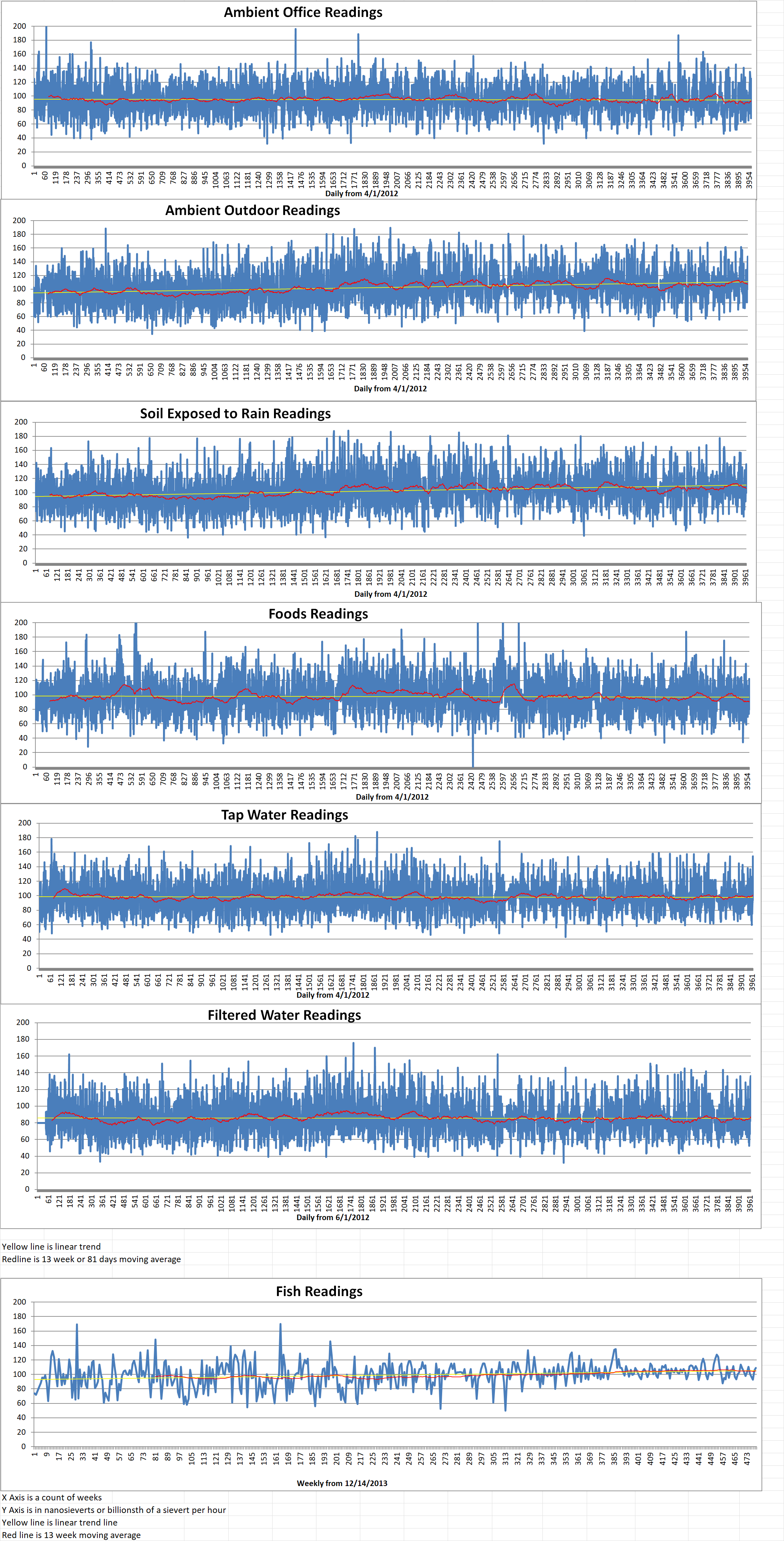
Geiger Readings for May 10, 2023
Ambient office = 125 nanosieverts per hour
Ambient outside = 100 nanosieverts per hour
Soil exposed to rain water = 100 nanosieverts per hour
Jalapeno pepper from Central Market = 80 nanosieverts per hour
Tap water = 94 nanosieverts per hour
Filter water = 83 nanosieverts per hour
-

Nuclear Reactors 1218 – Oak Ridge National Laboratory Is Working On An Augmented Reality System To Allow Workers To See Zones Of Radiation – Part 2 of 2 Parts
Part 2 of 2 Parts (Please read Part 1 first)
Michael Smith is a nuclear space systems engineer at ORNL and a member of the development team for the new AR system. He said that the team envisioned three applications for the ORNL. These three uses are listed below.
The new AR system can be used for routine radiological surveys by the radiological control technician when the radiation source location is known. The AR system can both simulate real-time detectors measurements and record data from actual occupational use by personnel regularly engaged in radiation surveys.
The new AR system can be used for cases in which the radiation source locations is unknown to take real-time detector data, map the location of personnel, and rapidly communicate visual spatial radiation data to individuals or to groups of radiological personnel in search of an unknown radiation sources.
The new AR system can be used to train radiological workers who are in similar radiation environment daily but may have limited knowledge about the spatial characteristics of the hazards of known sources.
Teletrix produces its own products that are used by utilities, emergency response organizations, and government agencies. According to ORNL the lab is one of its customers. One of Teletrix’s products is VIZRAD. It is a virtual reality software system that simulates contamination on individual and workspaces. It can be used to train a user to properly scan someone with a detector by providing objective feedback on technique.
Jason O’Connell is the sales and business development manager for Teletrix. He said, “When I put the AR glasses on, it was obvious that ORNL’s technology and Teletrix’s tools were a great fit. Through the headset and the AR technology, we have the ability to track a person’s exact location within a room and inject source information into the room. . . . Having much more realistic readings on your instruments leads to better-prepared employees, better prepared trainees, fewer incidents—this technology will help make people in this industry safer.”
According to the ORNL development team, performance data collected from about forty participants indicated that “statistically significant behavioral changes after minimal training with AR representations of radiation fields.” ORNL staff experimentally validated the method of coupling AR technologies with accurate measurements in a study using cesium-137 in ORNL’s Nuclear Radiation Protection Division demonstration facility.
As AR glasses become more sophisticated and cheaper, they will be adopted more widely, especially for industrial applications. In addition to uses for radiation monitoring, any detection system for environmental factors that has sufficient granularity could be displayed in AR. Thermal monitoring would be a possible candidate for this application. A monitoring system that employed a large number of screens to display information would definitely benefit from AR adoption. Instead of the expense of purchasing, installing, and maintaining a large number of conventional computer displays, those same images could be displayed with AR glasses much more cheaply and easily. Workers at a nuclear power plant could have access to important monitoring systems anywhere in the plant instead of being required to be in the control room. -
Nuclear News Roundup May 09, 2023
Westinghouse Partners with Dominion Energy to Further Modernize Virginia Nuclear Power Plant with Advanced Equipment tullahomanews.com
Staff car park unveiled as Canadian MMR’s planned location world-nuclear-news.org
The looming uranium shortage axios.com
NuScale SMR simulator opens in Romania world-nuclear-news.org
-
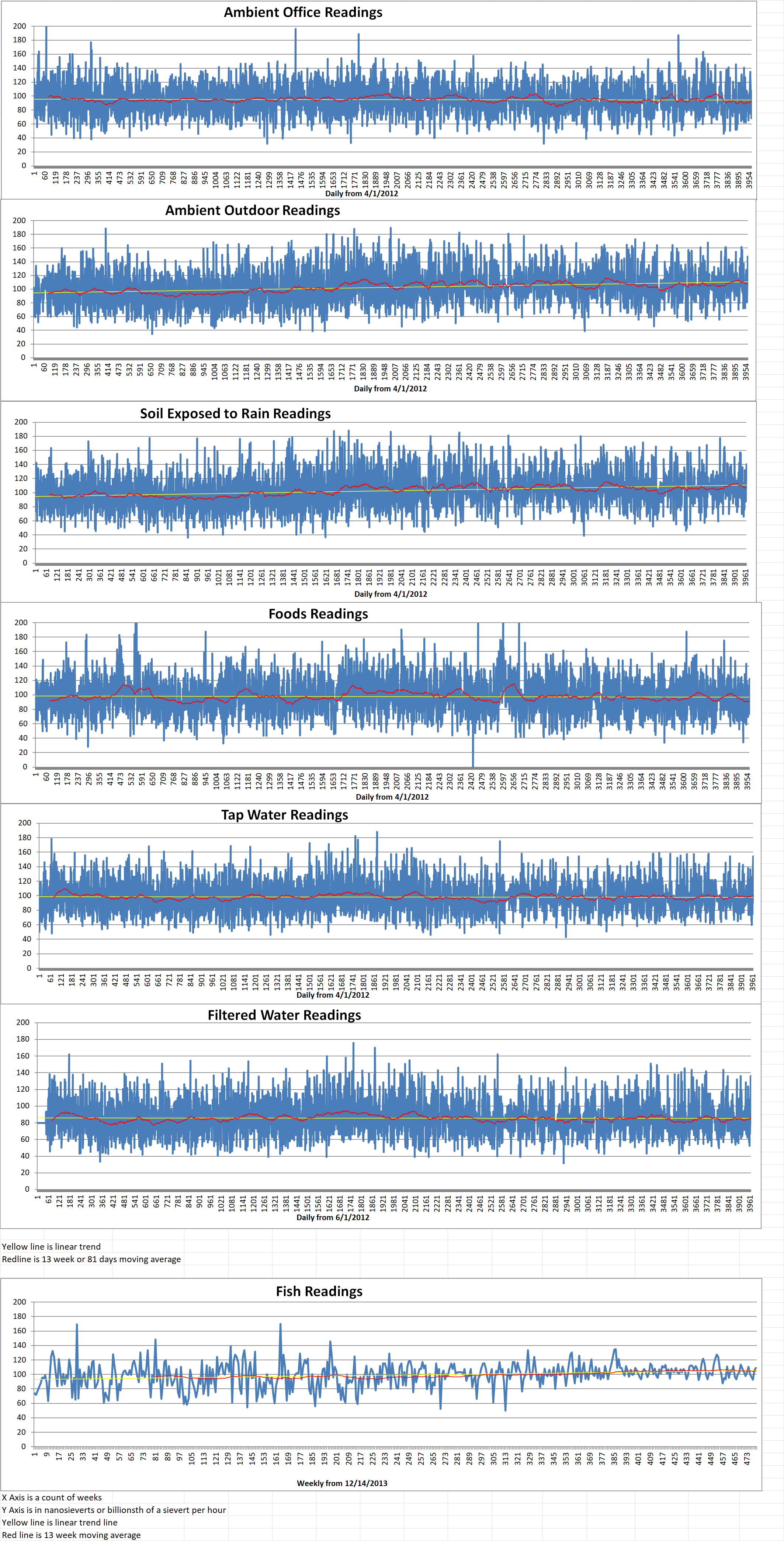
Geiger Readings for May 09, 2023
Ambient office = 68 nanosieverts per hour
Ambient outside = 148 nanosieverts per hour
Soil exposed to rain water = 140 nanosieverts per hour
Green onions root from Central Market = 122 nanosieverts per hour
Tap water = 155 nanosieverts per hour
Filter water = 136 nanosieverts per hour
-

Nuclear Reactors 1217 – Oak Ridge National Laboratory Is Working On An Augmented Reality System To Allow Workers To See Zones Of Radiation – Part 1 of 2 Parts
Part 1 of 2 Parts
Augmented reality is a term that refers to the addition of computer-generated objects to the field of view of a person wearing special glasses that project images into their eyes. Along with virtual reality, AR has received a lot of attention in the technology press recently. While many uses have been suggested for AR systems, one use with great potential is industrial applications. Boeing has been using a system for years that allows a technician installing wiring in their passenger jets to see an image of the correct positioning of the wires in their field of view.
Researchers at Oak Ridge National Laboratory (ORNL) have developed a method of using AR to create accurate visual representation of ionizing radiation. The new technology has just been licensed by Teletrix, a Pittsburg, Pennsylvania based company that develops simulators to train radiological workers and radiological control technicians. ORNL announced the news of their work on May 4th.
A staff team at ORNL originally created an application called Virtual Interaction with Physics-enhanced reality (VIPER). Utilizing simulated radiation data and a gaming platform, the new technology divides a physical space into cubes. Each cube has a volumetric value of ionizing radiation by dose. That data is used to create a 3D image of gradient contours that is overlaid on a real-world view through the use of an AR headset. A person wearing the AR headset can move through a physical space with visual awareness of the contours of radiation. As they move, the device can calculate simulated, real-time exposure based on their movements. Last year, ORNL posted a video that demonstrates the use of the new technology in a laboratory setting.
Michael Smith is a nuclear space systems engineer at ORNL and a member of the development team for the new AR technology. He said, “We combined physics-based data with a gaming interface that provides a visual platform to make something invisible look and feel real—we took science and cinematography and brought them together.”
The AR development team includes ORNL’s Noel Nelson and Douglas Peplow of the Nuclear Energy and Fuel Cycle Division and former ORNL researchers M. Scott Greenwood and Nicholas Thompson. Originally, the AR project began as a one-year seed project funded under ORNL’s Lab Directed Research and Development program. The Nuclear and Radiological Protection Division of ORNL provided significant support.
Smith said “When it comes to training with ionizing radiation, [AR] is a superior and safer solution. Our team was at the right place at the right time to develop this technology. There was a synergy of hardware and software maturity coupled with an idea that’s been around a long time—the need to see ionizing radiation.”
Smith added that “Just by having a general impression of the spatial relationship of your body in a given radiation environment, you can decrease your overall dose based on really fundamental behavioral change. We can’t see ionizing radiation, so you just walk right through it. But once you have seen what the radiation in your working environment looks like, you can’t unsee it. AR provides a means to train people to have a better visceral understanding of how ionizing radiation behaves.”
Please read Part 2 next
